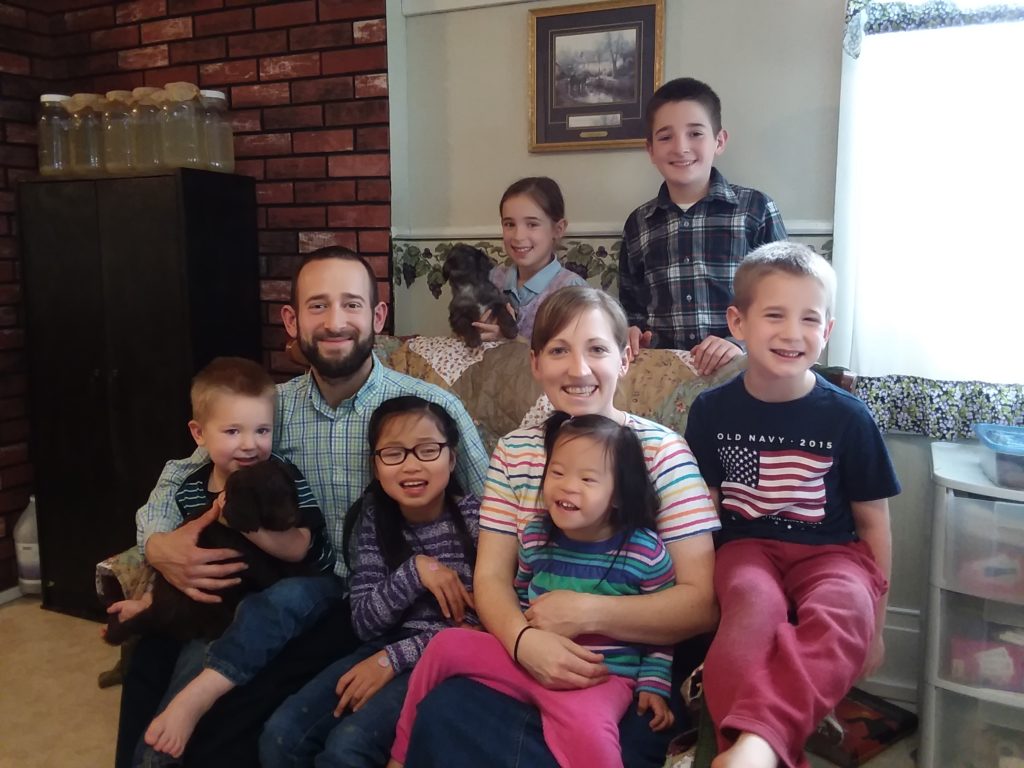MILLMONT — Sitting in middle school classes today are the people who will likely form the world’s first crew to Mars. With this in mind, Generation Beyond partnered with Discovery Education and Lockheed Martin for their 2017 video challenge: design the habitation module for astronauts to live in as they travel to Mars.
An 11-year-old from Millmont accepted that challenge … and won second place nationwide and a $5,000 prize.
“Something about going to Mars and just having new goals and going farther and father, it’s just, it’s exciting,” said Oliver Lenig, sitting in his family kitchen where he and most of his siblings are homeschooled by their mother. Raving about spaceships and rockets, he added, “I mean, who wouldn’t like rockets?”The video challenge, asking kids to send a video describing their habitation module, drew close to 700 total entries in Team and Individual categories, according to Nellie Donovan, accounting director for Discovery Education. Through two rounds of judging, the entries were whittled down to the top 50. From there 14 winners were chosen in Overall or Regional groups. Oliver’s second-place win came in the Overall Individual category.
A panel of judges that included experts from Discovery Education, Lockheed Martin and its partner organizations, educators and science professionals viewed each video three times. Videos were judged on scientific knowledge, creativity of the habitation module, effective communication and overall presentation.
“I think that’s very impressive that he was able to follow through the rubric and be graded so highly,” Donovan said of Oliver’s entry.
Oliver learned of the contest when his father, an elementary school music teacher in the Shikellamy Area School District, saw it advertised online.
“I presented the idea to Oliver and said it’s going to be a lot of hard work,” Mark Lenig said. “He jumped right into it. The next day, he had a list of ideas written down.”
Oliver’s first idea was a circular plan, but he couldn’t find a good way to avoid wasted space. Then he thought of honeycombs, and his hexagonal floor plan was born.
“We call it ‘The Hive’ Habitational Module,” he said. “I got the idea from bees.”
“The Hive” features two storage areas and five main rooms: galley/greenhouse, crew sleeping quarters, bathroom, exercise/medical bay and a meeting room. Sturdy cardboard forms the outer walls while clear plastic CD covers create scifi-looking interior walls. Mark found hexagonal graph paper for Oliver to draw up his plans, and then the two went to work.

“Me and Dad sat down here one night, and we had to put this thing together,” Oliver said.
Following contest guidelines, they made effective use of room capacity by acknowledging that in outer space there is no “up” or “down.” So the sleeping quarters feature little LEGO® men happily snoozing in plastic bubble wrap “beds” attached vertically to the walls.
Oliver included the exercise/sick bay to account for the effects of microgravity on the human body.
“I actually saw something on YouTube that showed bone reduction on earth, and bone reduction in zero gravity,” he said, eyes widening. “And it was a big change. You have to keep exercising to counteract that change.”
For entertainment on those long, intergalactic days, Oliver and Mark built a magnetic micro-gravity table hockey game. And to allow the puck to glide without flying off into zero-gravity air, they envisioned a magnetic table top with a magnetic puck encasing stainless steel ball bearings that roll over the table.
“Daddy helped me brainstorm some ideas,” Oliver said. “I had no idea what a ball bearing was.” After Mark explained it, Oliver said, “Oh, yes, that makes sense.”
Mark estimated the project took Oliver about 30 hours to do, from research to planning, to building the module and creating the 2-minute video to send to Generation Beyond. For that, Oliver dressed as a reporter, complete with fake mustache and business suit, as he explained each room and its purpose.
“He reads a lot. When he reads things, he wants to create what he’s reading about,” said Oliver’s mother, Leslie Lenig. “So there’s always a project in motion. Sometimes there’s a project that’s too big to actually get in motion, but he’s not afraid to try.”
And though he once told Leslie he wants to live on Mars someday, he tends to immerse himself in the books that capture his interest. When he read about Milton Hershey, he experimented with making candies. He’s reading Sherlock Holmes now and wants to be a detective. Eventually he’d like to be a missionary pilot in Southeast China, where two of his adopted sisters were born. He’s been learning Mandarin for the past two years.
“I love to read,” Oliver said. “I love history. I love making stuff.”
“He spends half of his day out building or exploring,” Leslie said. “That’s part of the reason we homeschool. I like to see him using his brain to do things, make things.”
For now, the 11-year-old is content to explore the world from the safety of his rural Pennsylvania home, but his future interests could lead him to tackle challenges in any number of places around the world … or even beyond.
“We think about big corporations solving big problems, big challenges,” Donovan said. “But they know the students have the ability to bring creative solutions to the challenges we face … It’s fun to get students excited about the Space Race.”


